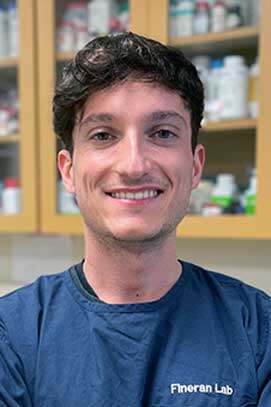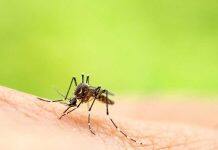A microscopic discovery will not only enable scientists to understand the microbial world around us but could also provide a new way to control CRISPR-Cas biotechnologies.
An international team of researchers led by Professor Peter Fineran from the University of Otago and Dr Rafael Pinilla-Redondo from the University of Copenhagen has published a study in the prestigious journal Nature revealing new way viruses suppress the CRISPR-Cas immune systems of bacteria.


Co-first author Dr David Mayo-Muñoz, of the Phage-host interactions (Phi) laboratory in Otago’s Department of Microbiology and Immunology, says this finding could teach us about microbial dynamics in the environment, be used to make gene editing safer, and lead to more efficient alternatives to antibiotics.
“The discovery is exciting for the scientific community because it provides a greater understanding of how CRISPR-Cas defences can be stopped,” he says.
CRISPR-Cas are immune systems bacteria have that protect them from getting infected by bacterial viruses – called phages. It works by taking pieces of phage DNA and adding it to the bacterium’s genome. Bacteria end up with a memory bank of past phage infections which it files like mugshots, using them to identify and degrade that specific phage when it attacks again.
“If a virus comes in, part of its DNA is added to the memory bank, and then turned from DNA to RNA in the process. Each RNA acts like a guide so the CRISPR-Cas system can correctly identify and destroy the invading phage. Each addition to the memory bank is divided by a CRISPR repeat sequence, which stacks up like bookends between each phage sequence.
“The interesting thing is that phages have evolved different ways to overcome these defence systems – it’s like an evolutionary arms race. Bacteria have CRISPR-Cas so the phages have developed anti-CRISPRs, which enables them to block the immune complexes of the bacteria.
“What we’ve discovered is a whole new way that phages can stop CRISPR-Cas systems,” Dr Mayo-Muñoz says.
Previous researchers showed that some phages have CRISPR repeat sequences in their genomes and, in the current study, the Otago and Copenhagen team demonstrated that phages load bacteria with these RNA repeats to stop CRISPR–Cas.


Professor Fineran, head of the Phi laboratory at Otago, says these RNA anti-CRISPRs blind the immune complexes of the bacteria.
“Phages have components of bacterial CRISPR-Cas systems in their own genomes. They use these as molecular mimics for their own benefit to silence the immune system of bacteria and allow phage replication,” he says.
The group also found that when the phage loads RNA repeats onto the CRISPR-Cas proteins, not all of the right proteins load, forming a non-functional complex.
“This molecular mimic ruins the defences of the bacteria and the function of the system; it’s basically a decoy.”
A major interest in CRISPR-Cas lies in its programmable nature to precisely edit genomes – the Nobel Prize in Chemistry was recently awarded for this technology. Interestingly, anti-CRISPRs can be used as a safety switch to turn off or tune this technology.
“To harness the potential of CRISPR-Cas technologies, it is important to be able to control it, turn it on and off, and tune it, improving its accuracy and therapeutic benefit.
“Our discovery is the first evidence of an RNA anti-CRISPR, which has a shorter genetic sequence than previously discovered protein anti-CRISPRs, and since they are based on known CRISPR repeat sequences, we have the possibility to design RNA anti-CRISPRs for all CRISPR-Cas systems and their specific applications,” Dr Mayo-Muñoz says.
CRISPR-Cas will eventually be used for gene therapy – to repair mutated genes that cause disease – but to make it safer, anti-CRISPRs are needed to modulate the technology.
Phages can also be used as antimicrobials to kill pathogenic bacteria, offering an alternative to antibiotics, but if the infected bacterium has an active CRISPR-Cas system, phages with the right anti-CRISPRs will be needed to neutralise it.
“Being able to create a bespoke anti-CRISPR will be a powerful option to have in the toolbox.” Professor Fineran says.
“We are excited to be able to provide a whole new insight into how phages battle with their bacterial hosts. We hope that these RNA anti-CRISPRs will provide a new approach to help control CRISPR-Cas technologies.”








































